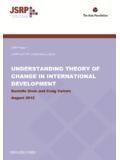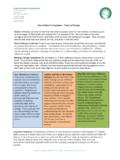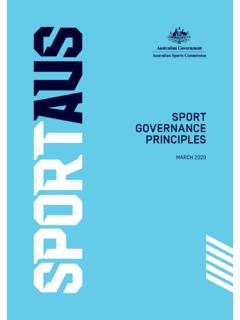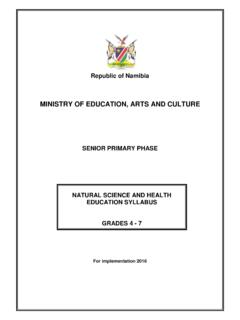Transcription of UNDERSTANDING THEORY OF CHANGE IN INTERNATIONAL ...
1 JSRP Paper 1. (JSRP and TAF collaborative project). UNDERSTANDING THEORY OF. CHANGE IN INTERNATIONAL . DEVELOPMENT. Danielle Stein and Craig Valters August 2012. i Danielle Stein and Craig Valters, 2012. Although every effort is made to ensure the accuracy and reliability of material published in this paper, the Justice and Security Research Programme and the LSE accept no responsibility for the veracity of claims or accuracy of information provided by contributors. All rights reserved. No part of this publication may be reproduced, stored in a retrieval system, or transmitted in any form or by any means without the prior permission of the publisher, nor be issued to the public or circulated in any form other than that in which it is published.
2 Requests for permission to reproduce any part of this paper should be sent to: The Editor, Justice and Security Research Programme, INTERNATIONAL Development Department, LSE, Houghton Street, London WC2A 2AE. Or by email to: ii UNDERSTANDING THEORY OF CHANGE ' IN. INTERNATIONAL DEVELOPMENT: A REVIEW OF. EXISTING KNOWLEDGE. BY DANIELLE STEIN AND CRAIG VALTERS1. Table of Contents Summary .. 2. Methodology .. 2. What is a THEORY of CHANGE ? .. 3. The Purpose of THEORY of 5. THEORY of CHANGE Levels .. 8.
3 The Role of Key Concepts in THEORY of CHANGE .. 9. Assumptions .. 10. 11. Social Science THEORY .. 12. Ideas About THEORY of CHANGE Best Practice .. 13. Process .. 13. Content .. 14. Discussion .. 14. Conclusion .. 15. Key papers/Further 16. Bibliography .. 17. 21. 1 The authors are researchers at the Justice and Security Research Programme at the London School of Economics and Political Science (LSE). Questions or comments are welcome; please send them to and Many of the key points in this literature review were developed as part of discussions within the JSRP-TAF collaboration: particular thanks go to David Lewis (LSE/JSRP), Henry Radice (JSRP), Mareike Schomerus (JSRP) and Matthew Arnold (TAF).
4 Responsibility for this work remains with the authors. 1. Summary This is a review of the concepts and common debates within THEORY of CHANGE ' (ToC). material, resulting from a search and detailed analysis of available donor, agency and expert guidance documents. The review was undertaken as part of a Justice and Security Research Program2 (JSRP) and The Asia Foundation3 (TAF) collaborative project, and focuses on the field of INTERNATIONAL development. The project will explore the use of Theories of CHANGE (ToCs) in INTERNATIONAL development programming, with field research commencing in August 2012.
5 While this document will specifically underpin the research of this collaboration, we also hope it will be of interest to a wider audience of those attempting to come to grips with ToC and its associated literature. From the literature, we find that there is no consensus on how to define ToC, although it is commonly understood as an articulation of how and why a given intervention will lead to specific CHANGE . We identify four main purposes of ToC strategic planning, description, monitoring and evaluation and learning although these inevitably overlap.
6 For this reason, we have adopted the term ToC approaches' to identify the range of applications associated with this term. Additionally, we identify some confusion in the terminology associated with ToC. Of particular note is the lack of clarity surrounding the use of the terms assumption' and evidence'. Finally, we have also drawn out information on what authors feel makes for ToC best practice' in terms of both content and process, alongside an exploration of the remaining gaps where more clarity is needed.
7 A number of key issues' are highlighted throughout this review. These points are an attempt to frame the literature reviewed analytically, as informed by the specific focus of the JSRP-TAF collaboration. These issues are varied and include the confusion surrounding ToC definitions and use, the need to sell' a ToC to a funder, how one can know which level' a ToC should operate on, the relationship between ToC and evidence-based policy, and the potential for accuracy, honesty and transparency in the use of ToC approaches.
8 This paper does not aim to give definitive answers on ToC; indeed there are many remaining important issues that lie beyond the scope of this review. However, in highlighting a number of key issues surrounding current understandings of ToC. approaches, this review hopes to pave the way for more constructive and critical discussion of both the concept and practical application of ToCs. Methodology This review covers documents from major donors, development agencies and expert practitioners on ToC approaches.
9 Of 246 documents initially accessed, 48 containing guidance or substantial discussion of ToC were The majority of documents 2 The JSRP was launched in April 2011 at the LSE INTERNATIONAL Development Department. The programme involves a consortium of research partners undertaking work on issues of justice, security and governance in fragile and conflict-affected situations. 3 TAF is a non-profit, nongovernmental organization committed to the development of a peaceful, prosperous, just, and open Asia-Pacific region.
10 TAF support wide-ranging programming across fragile and conflict-affected states in Asia. 4 A background document contains the full research notes of the authors for all 48 papers. It is notable that although 48 documents were reviewed to provide a measure of guidance on ToC, relatively few are 2. were obtained through a mix of systematic internet-based searches and snowballing methods. Key papers identified through personal knowledge of the research team were also included. A question template was developed to draw out information from each document and to ensure consistency across researchers.









